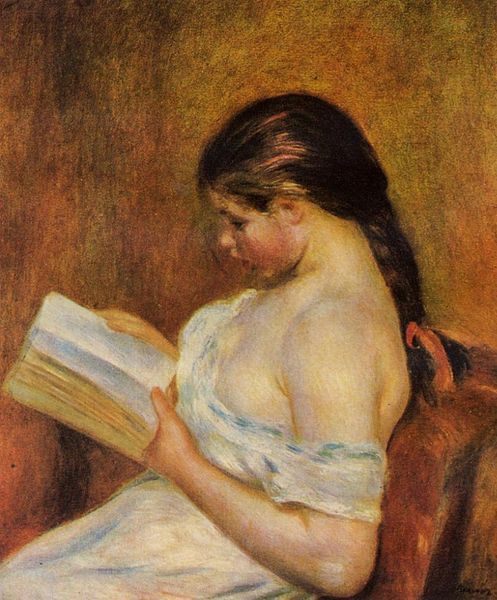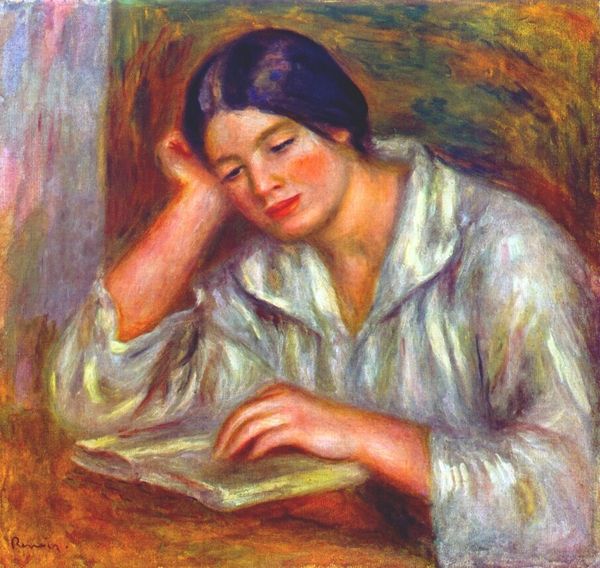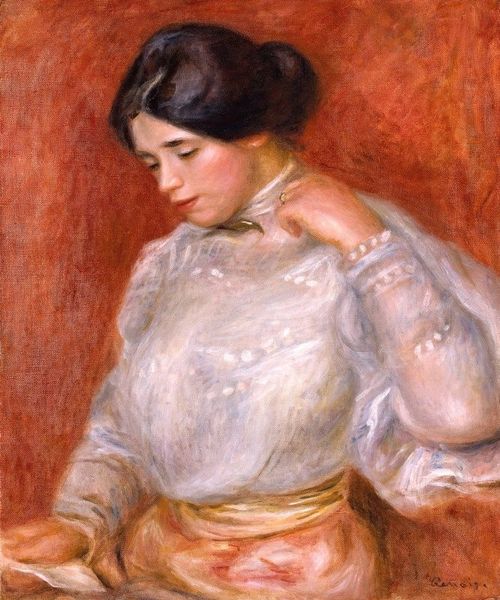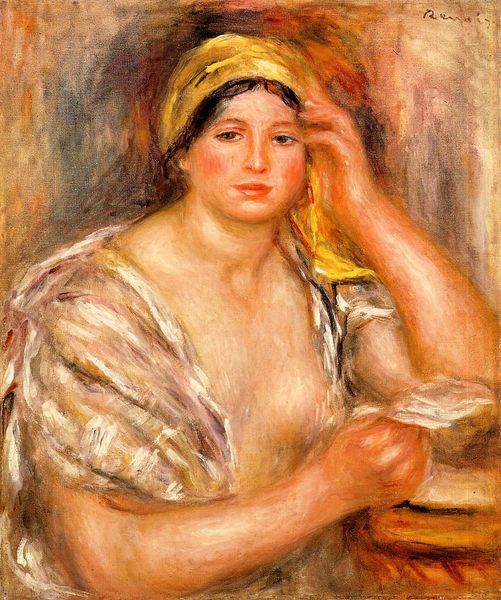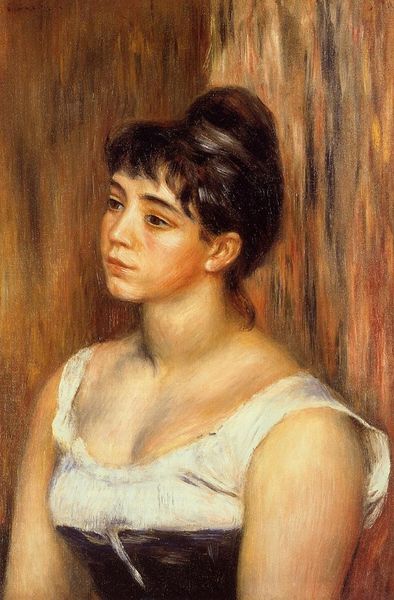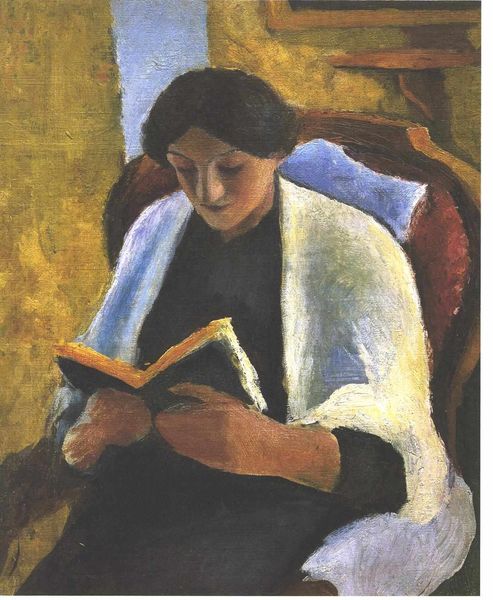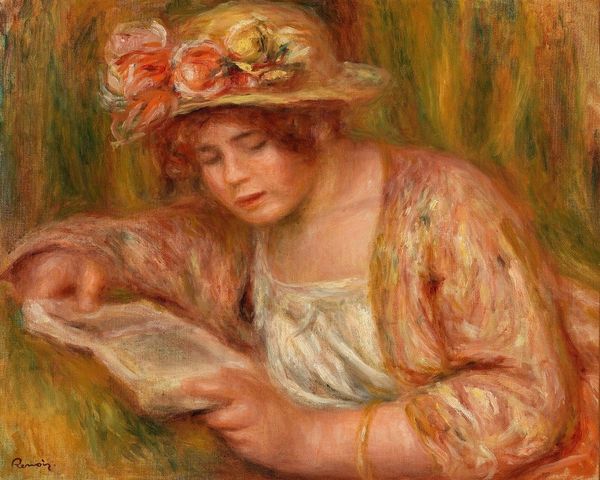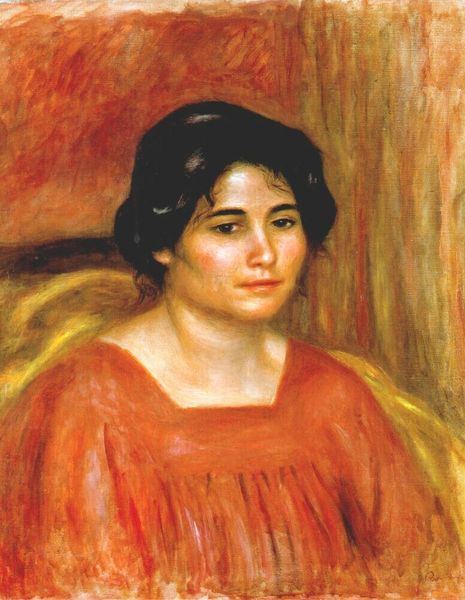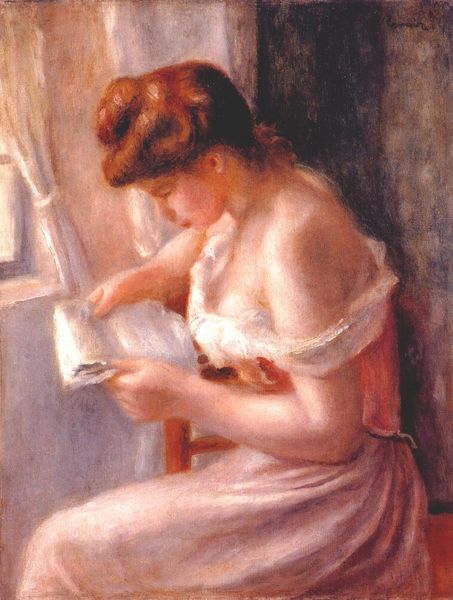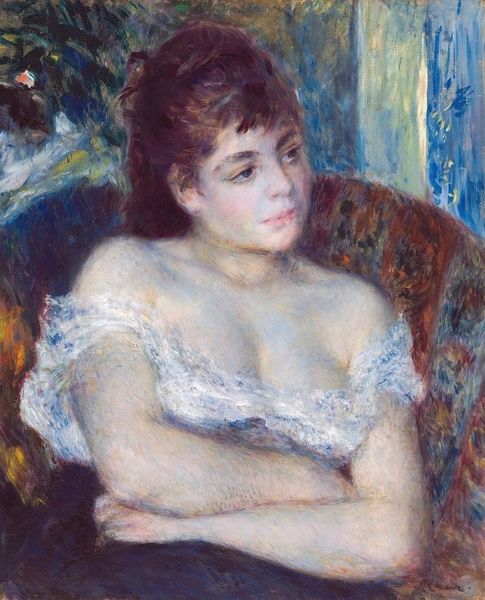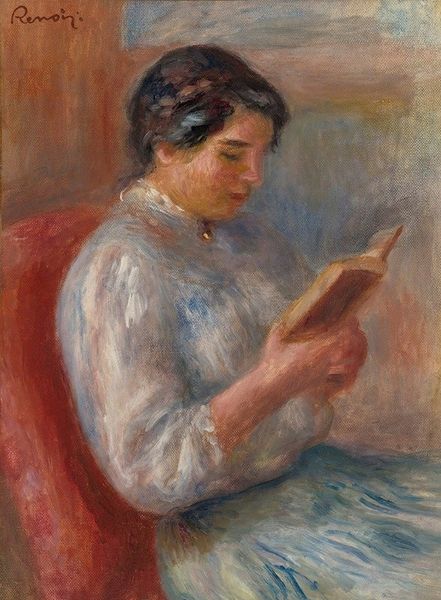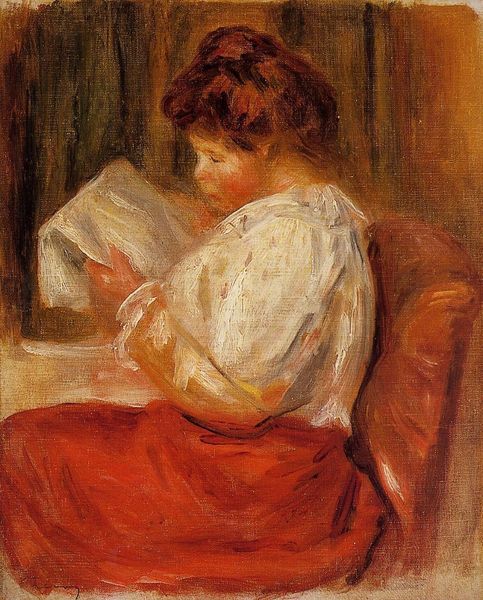
Copyright: Public domain
Curator: Immediately, I’m struck by the light—soft, enveloping. There’s a deep serenity here, a gentle, almost meditative quality. Editor: Indeed. Let’s delve a little deeper. What we have here is Pierre-Auguste Renoir’s 1906 oil painting, "Gabrielle Reading". Renoir was deeply interested in exploring domestic scenes and the representation of women within intimate environments, during a time when women were demanding different roles. Curator: Domesticity as sanctuary, perhaps? There's an undeniable sense of safe remove; consider the almost womb-like enclosure suggested by those flowing, almost indistinct, curtains in the background. And the way Gabrielle is engrossed in her book creates a private sphere within a private space. A retreat within a retreat. Editor: That's a very astute observation. And we must remember Renoir's circle—the burgeoning Parisian bourgeoisie who relished such idealized, private depictions, contrasting with the grim realities faced by working-class women outside of this elite existence. Gabrielle's leisure becomes a signifier of social position. Curator: True. But beyond that sociological interpretation, I also see in the rosy flesh tones and soft brushstrokes a visual embodiment of feminine ideals that persist. Gabrielle becomes an archetypal figure of grace, her rosy cheeks reminiscent of traditional ideals of maidenhood and innocence that endure, though perhaps under different cultural expressions today. Editor: Ah, but aren't ideals often born out of the specific sociopolitical context? Renoir himself was deeply enmeshed within the art market. The commodification of beauty and this sort of intimate portraiture helped build and maintain his fame and financial security within that complex structure. His idyllic women helped secure a market share. Curator: I understand the market influences, but the recurring motif of the reader – found across cultures and time periods—is always potent: it speaks to our yearning for knowledge, understanding, for transcending the present moment. This universal desire transcends that. Editor: That may very well be! Perhaps that's where its continued appeal comes from—a beautiful marriage of material, social, and timeless concepts! Curator: Precisely! It is a work rich in complex associations; it’s no mere painted snapshot.
Comments
No comments
Be the first to comment and join the conversation on the ultimate creative platform.
